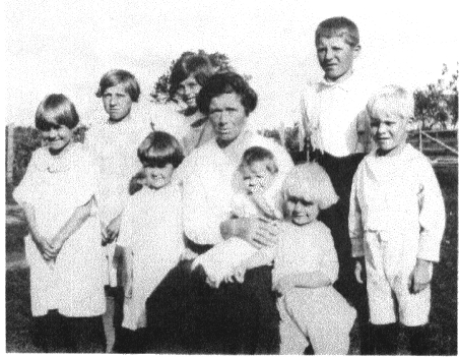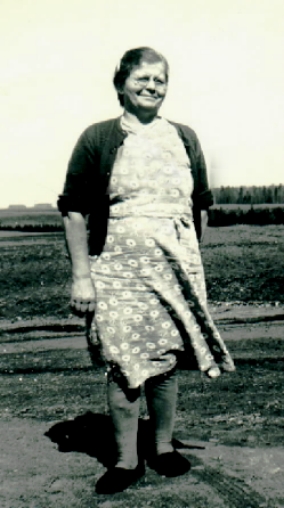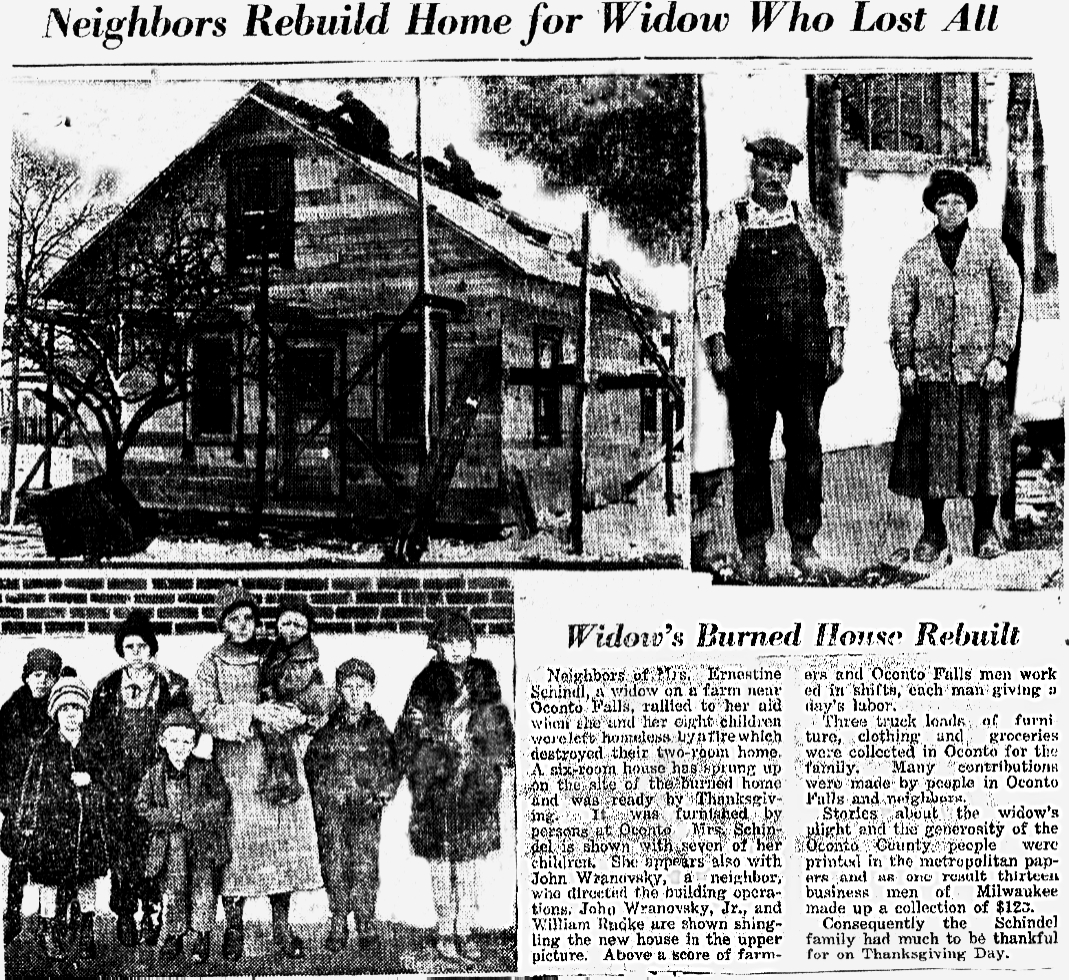|
1889 - 1950 Written and contributed by grandson, Richard
LaBrosse The
Summer of 1928
Ernestine Muth was born on January 5, 1889 in Dabie Poland. She passed away on July 16, 1950 in her home at Oconto Falls, Wisconsin and is buried at the Woodlawn Cemetery at Oconto Falls, Wisconsin. Ernestine married Emil Schindel in Dabie Poland. Emil also came from Dabie Poland. He was born January 4, 1886. They had two children before they came to the United States. Frederick, who passed away, and Otto. Emil came to the United States first. He left Hamburg Germany on March 23, 1913 on the ship SS President Grant. He arrived at the port of New York on April 2, 1913. He then made his way to a little log cabin in the woods at Green Valley, Wisconsin. There he worked in the logging industry to support himself and to get money to bring Ernestine here. Ernestine arrived at the Port of New York on August 20, 1913. Somehow she made it on foot to that cabin in Green Valley carrying some possessions and their son Otto. They stayed in that log cabin for a short while then left. After leaving Green Valley, Emil and Ernestine settled in the Gillett area for a short time. Then the family of three bought a small forty acre farm, with a small lake, about two miles west of Oconto Falls on what is now known as Golden Corners Road. During the first years on the farm, they built a house, barn and some small buildings. They raised all their own
In 1926, Emil passed away and left Ernestine with eight small children to raise on her own. On June 6, 1930, she re-married to Henry Raatz of Gillett and they had one more son, William who passed away in 1985 at Gillett where he lived. All are buried at Woodlawn Cemetery at Oconto Falls. After Emil passed away, Ernestine was the sole provider for her eight children. As each child got old enough to walk, they were taught how to pull weeds in the huge garden she planted each year. That garden is what gave her most of the food the family had to eat through the hard winters until the next harvest. Every fall, the basement under the house was full of enough food to feed herself and her family until the next year when the process started once more. The food included barrels of pickles, potatoes, and all kinds of canned fruit that was picked wild, canned beef, pork, and chicken. Many heads of cabbage and many barrels of sauerkraut. Besides a few cows, Ernestine raised chickens and sold eggs, raised pigs along with geese and ducks. Most of these were sold to be able to buy flour, salt, and items needed for the canning season, along with clothing for all of them and oil for the lamps as there was no electricity. All the children had things that they had to do. There was very little spare time for any of them. When the garden was finished being planted, she would plow the fields with a one-bottom plow pulled by a horse that one of the children had to ride. She had to grow corn and hay and store that to feed the animals through the winters. Then it was time to cut firewood to keep the house from freezing during the winter. During the hard times, the depression of 1929 had no affect on them as they lived it every day, all the children helped in their own way. Otto, the oldest, would hunt for pheasant, duck and deer so they could have meat on the table as most of the animals she raised got sold. Ernestine would leave all the children go down to the lake to fish. They would always leave very early in the morning and catch enough pan fish to fry up for breakfast. During those early years, Ernestine made sure that all of the children went to school every day. The Elm Lawn School was about a mile down the road and even if they had to walk backwards because of a windy blizzard, they still went to school. Then, on Sundays, they would walk to Oconto Falls to go to church. They carried their shoes so as to not wear them out. When they got to the church they would then put them on and go in for services. Then, in early November of 1928, Ernestine was grinding corn in the corncrib when one of the smaller children appeared. She could not figure out what the child was doing. Then she looked towards the house and saw the smoke. The youngest child was sleeping inside and Ernestine ran into the burning house to get her. On the way out she was over come with smoke and fell to the floor. Fred Radke, who lived across the road with his son William, saw the smoke and ran over to help. He found both of them on the floor and dragged them outside. The house was gone and all Ernestine's family had left was the clothes they were wearing. The neighbors in the area donated time and material and built her a new home on the same spot. There was a story, along with a picture, in the local paper about the fire and people from as far away as Milwaukee sent money to help. She received over a hundred dollars. While the house raising took less than three weeks, Ernestine and her family stayed at the home of William and Wanda Radke who lived across the road. The Radkes had a large family of their own and now the house held nine more for a couple of weeks. By the time thanksgiving came, Ernestine was in her new home. Since all the winters’ supply of food was burned in the fire, they had to depend on many other people that first winter. Otto, the oldest son, was not home at the time of the fire. Ernestine had received county help at some point in time before the fire and the County came and took Otto away and told him he had to work on a farm in Gillett. Otto fell out of a haymow and injured his back. He spent many months in a Madison hospital. His back injury did not heal properly and he was partially disabled for the rest of his life. Where the money went from Otto's job is unknown. When spring came in 1929, the process of growing, raising and canning food started once again. In the late 1920’s, Ernestine met Henry Raatz who lived in Gillett. They married and had a son named William. The years went by and some of the children met people and got married. Ernestine's daughter Olga, who was born in 1916, married Oscar Mayer. Oscar was a very hard man to live with and the marriage got into trouble. They had five children with the last one, Judith to be born in February of 1942. On October 23, of 1942, Olga was sitting in her mother’s kitchen when her husband fired a shotgun through the window. Olga and her 8-month-old daughter did not survive. Ernestine lived at her home as
all of her children grew up and got married. The children moving
away from home did not stop them from returning to make sure she
had enough to make her last years a little more comfortable. Ernestine
passed away in 1950 in her own home.
Anna Schindel Wirtz, Frieda Schindel LaBrosse, Olga Schindel Mayer, Gustav Schindel, (mother) Ernestine Muth Schindel, Lillian Schindel Schwittay, Adolph Schindel, Martha Schindel Falash - Otto Schindel was not present at the time of the photograph. |


